Abstract
The reflex effects of increasing pulmonary ventilation on the responses of the hind-limb and systemic vascular resistances to stimulation of the carotid body chemoreceptors and carotid sinus baroreceptors and to distension of the urinary bladder have been studied in the anaesthetized dog. A preparation was used incorporating total cardiopulmonary bypass to maintain the arterial blood gas composition constant when alterations in pulmonary ventilation were made. The regions of both carotid bifurcations, the arch of the aorta and the cerebral circulation were independently perfused at constant pressure so as to exclude secondary reflexes from arterial baroreceptors. Four levels of pulmonary ventilation were used: 0.095, 0.285, 0.475 and 0.665 l min-1 kg-1 body weight, at a constant frequency of 19 cycles min-1. Increasing the pulmonary ventilation per se in steps from 0.095 to 0.665 l min-1 kg-1 resulted in a significant progressive reduction in hind-limb and systemic vascular resistances which were shown to be due to a reflex from the lungs. Stimulation of the carotid body chemoreceptors by hypoxic hypercapnic blood resulted in an increase in hind-limb and systemic vascular resistances when carried out at each of the four levels of pulmonary ventilation. The size of the increases in vascular resistances, however, was progressively and significantly reduced as the pulmonary ventilation was increased. This partial inhibition of the carotid body reflex vasoconstrictor response was dependent on the innervation of the lungs. Stimulation or unloading of the carotid sinus baroreceptors by altering the perfusion pressure in the vascularly isolated carotid bifurcation regions caused a significant decrease and increase respectively in hind-limb and systemic vascular resistances at all four levels of pulmonary ventilation. Unlike the responses to chemoreceptor stimulation, the size of these responses was unaffected by the level of pulmonary ventilation. Distension of the urinary bladder resulted in a significant increase in hind-limb and systemic vascular resistances. The size of these responses was also unaltered by changing the level of pulmonary ventilation. These results indicate that there is an interaction between the inputs from the lungs and the carotid body chemoreceptors in the control of hind-limb and systemic vascular resistances. In contrast the inputs from the carotid sinus baroreceptors and the urinary bladder were unaffected by the input from the lungs.
Full text
PDF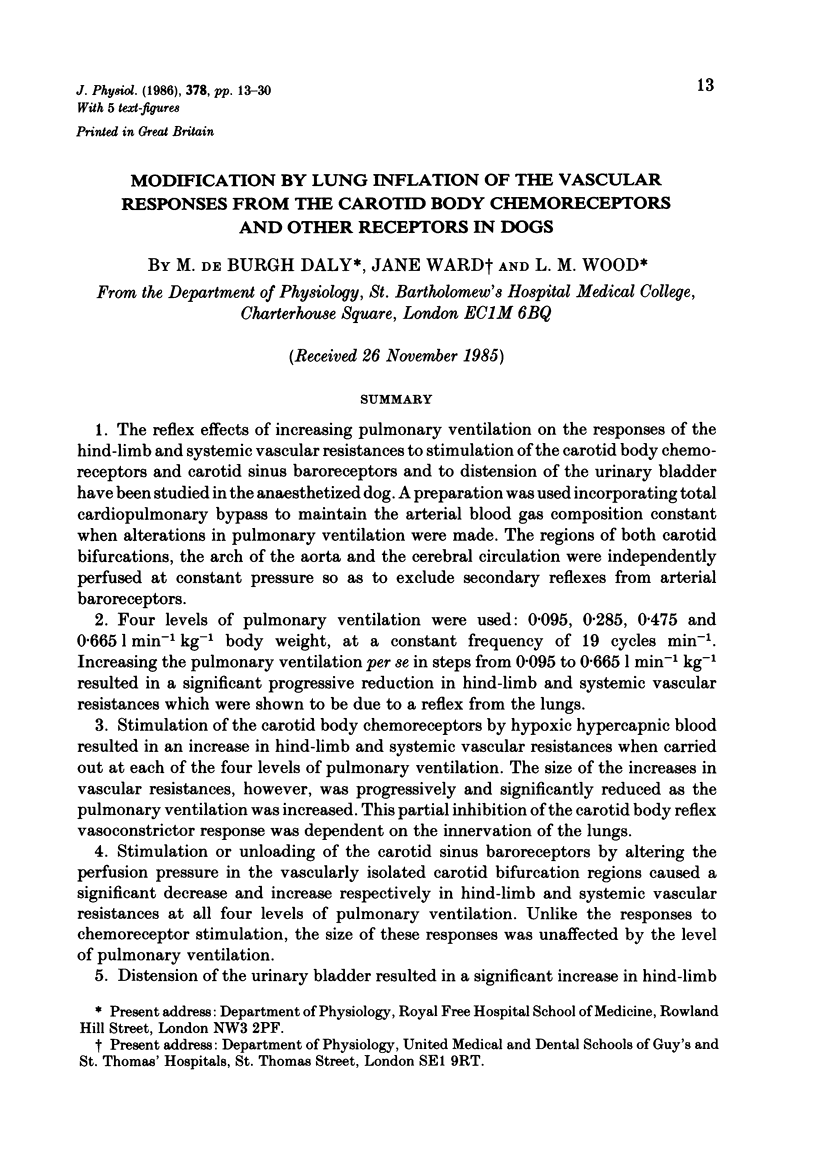
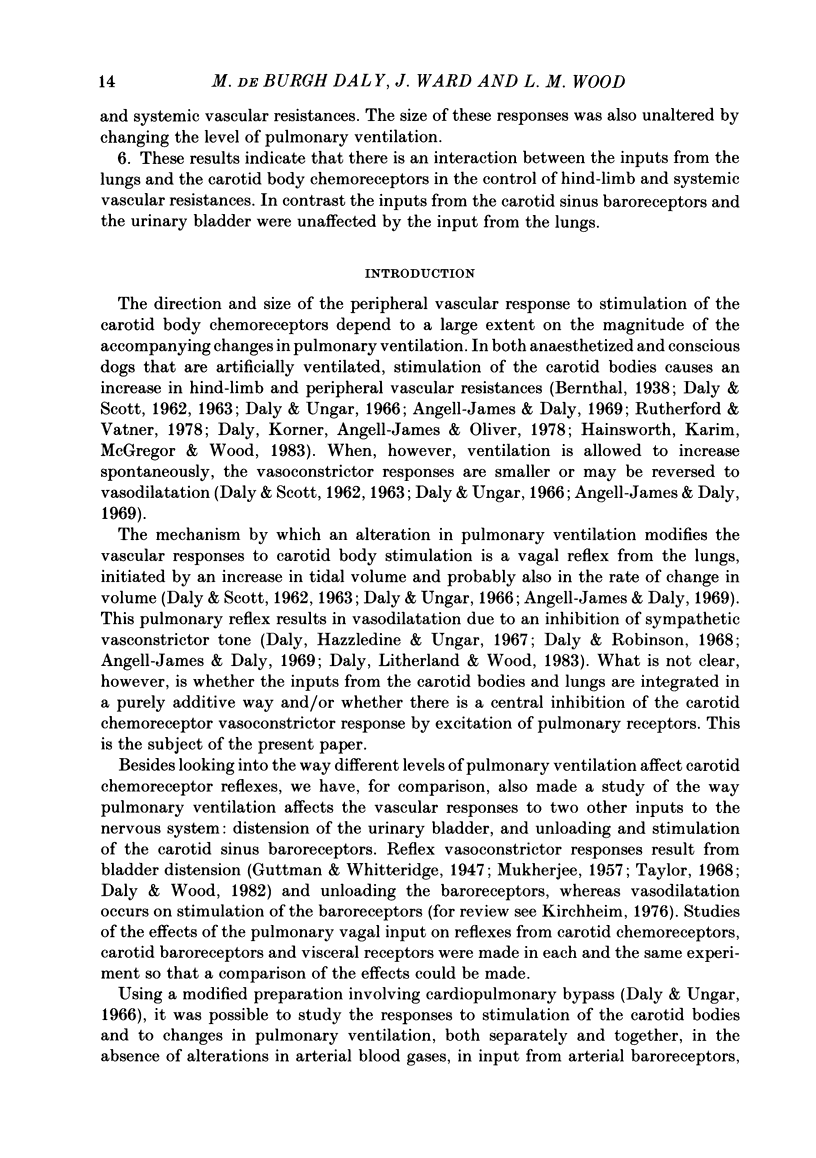
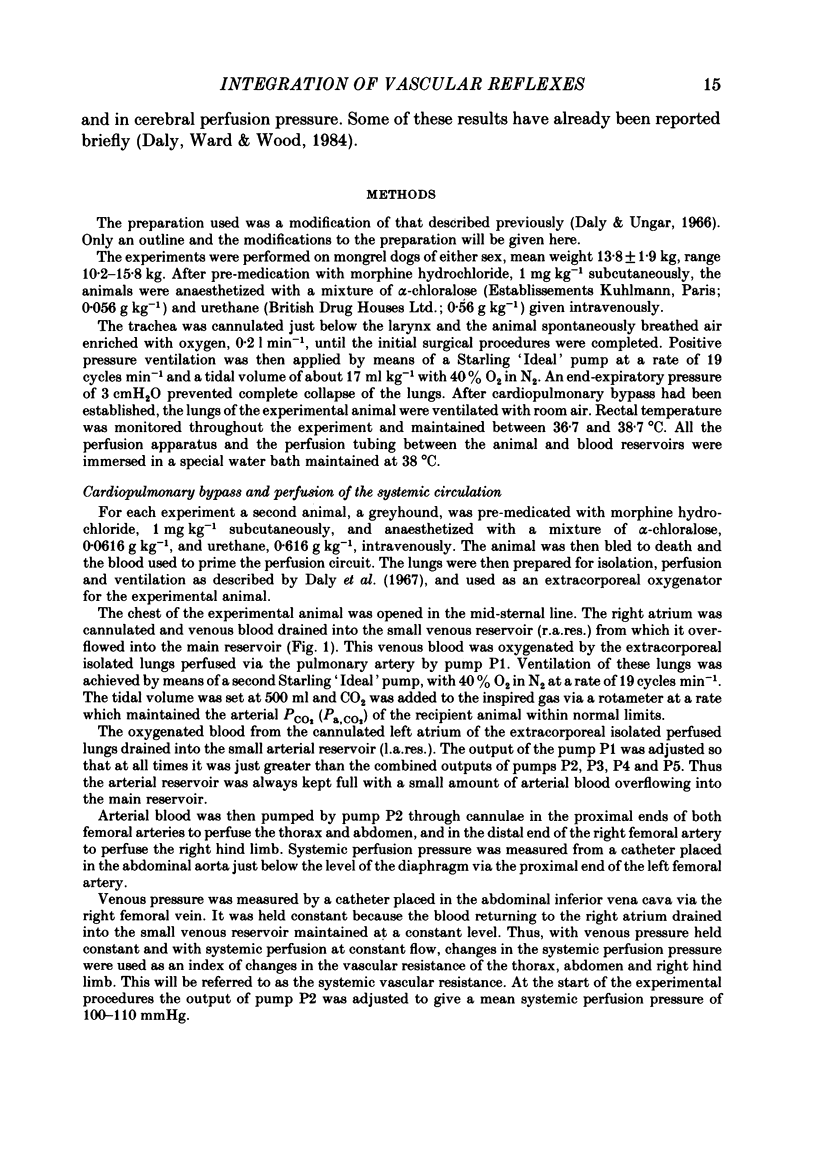
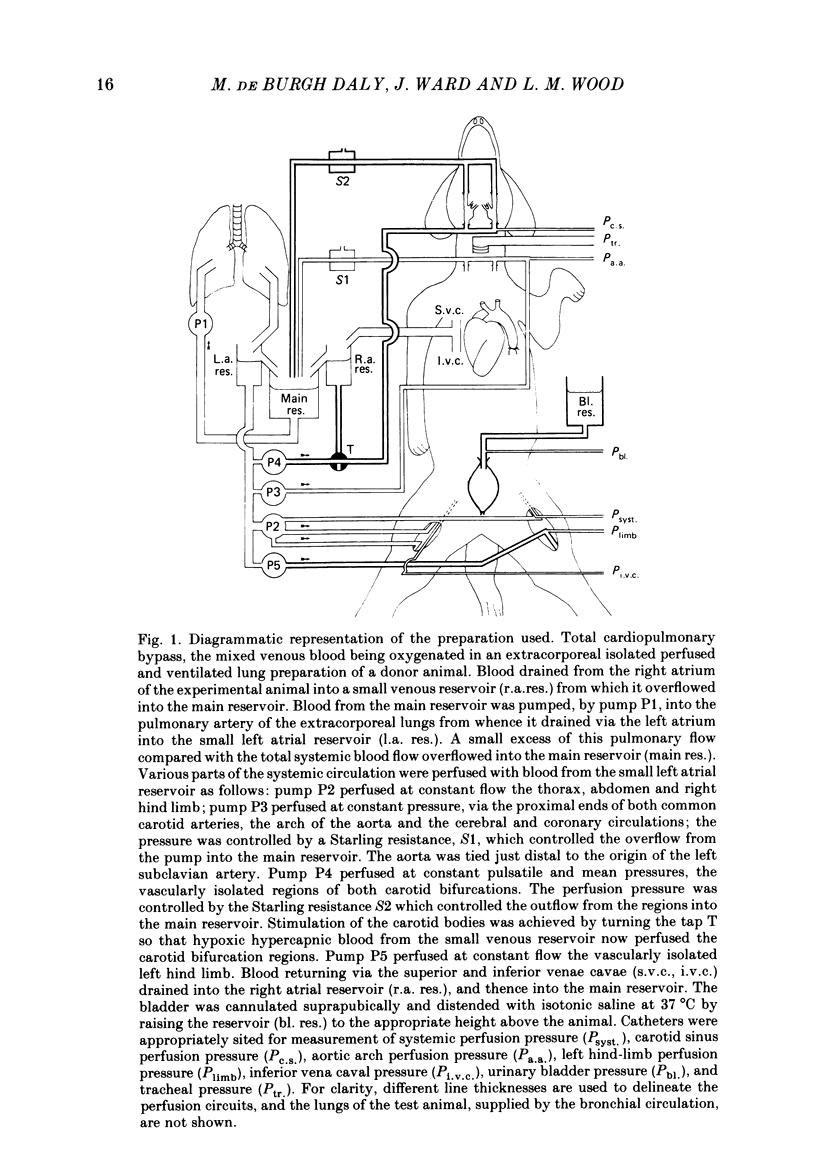
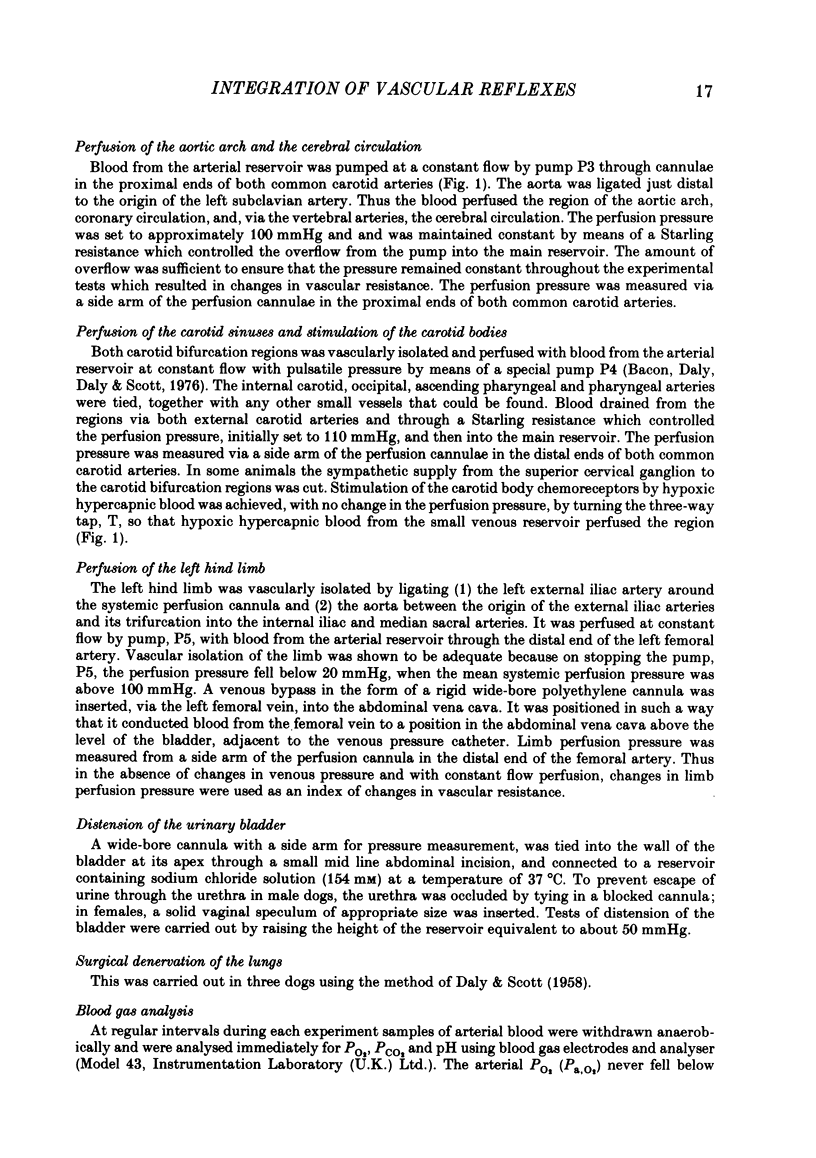
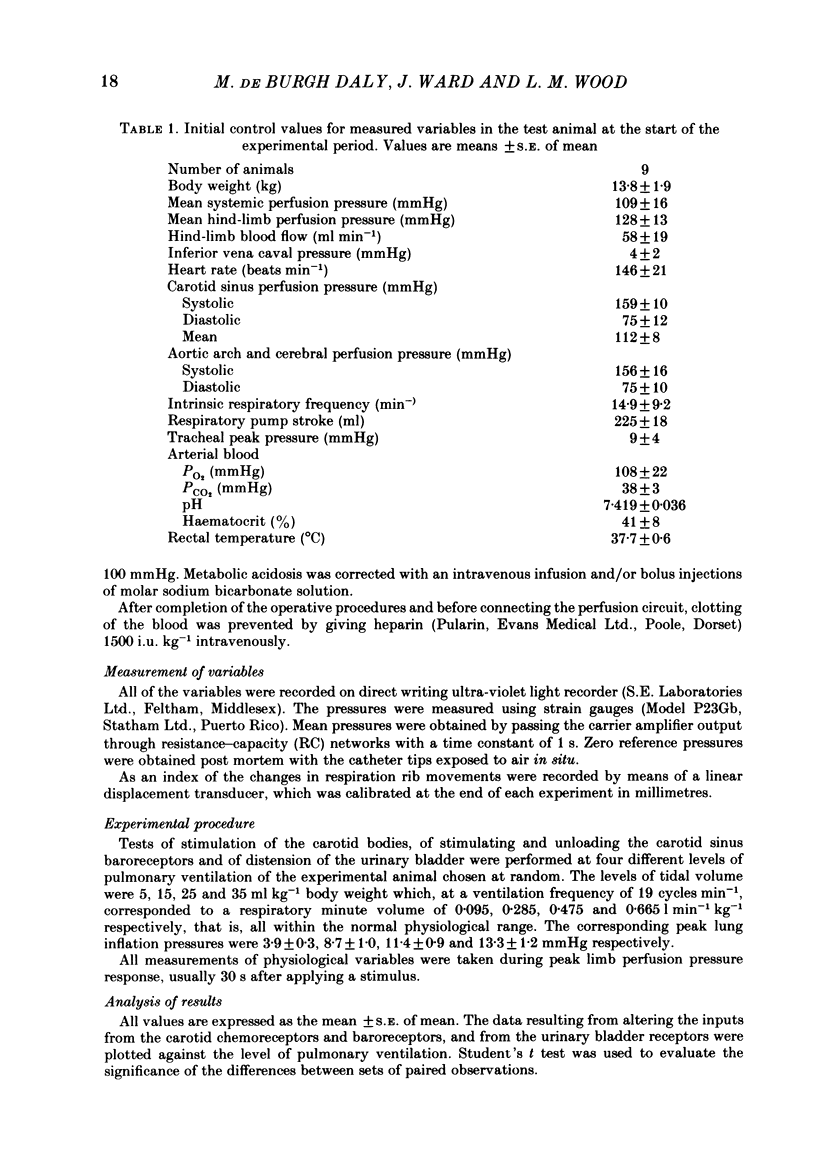

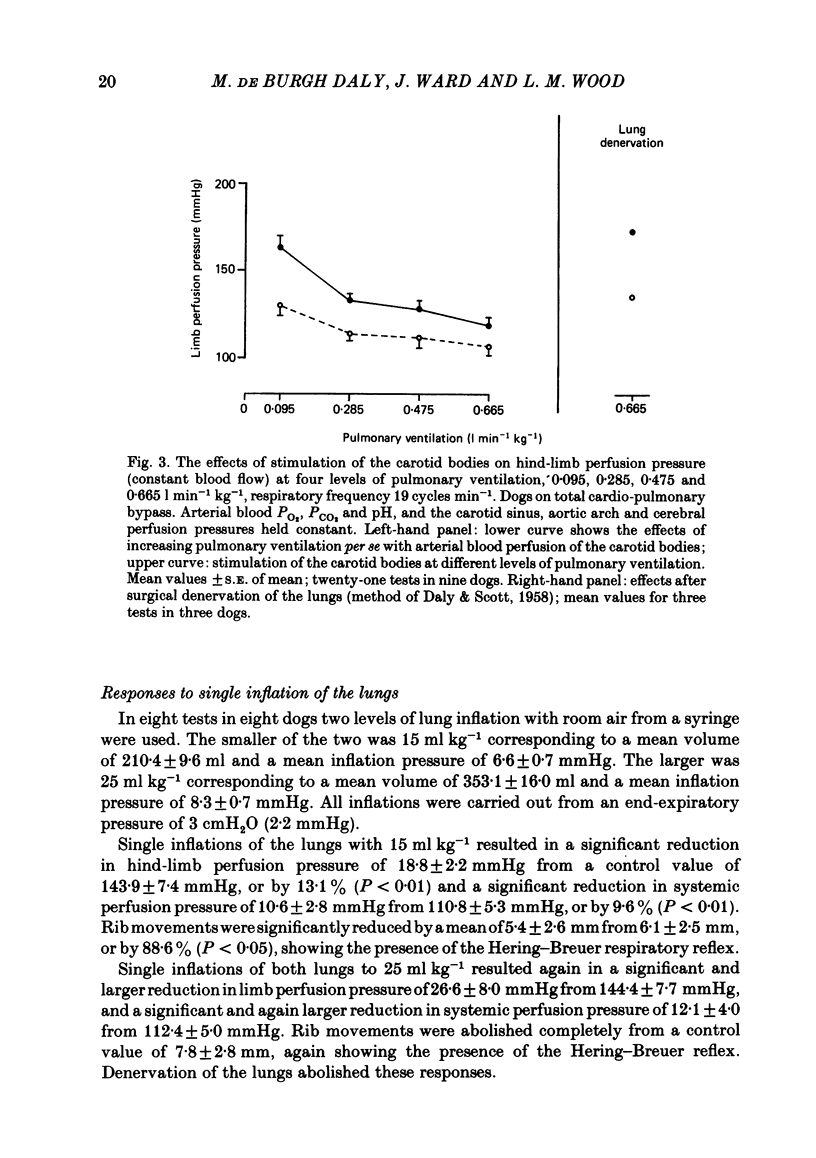
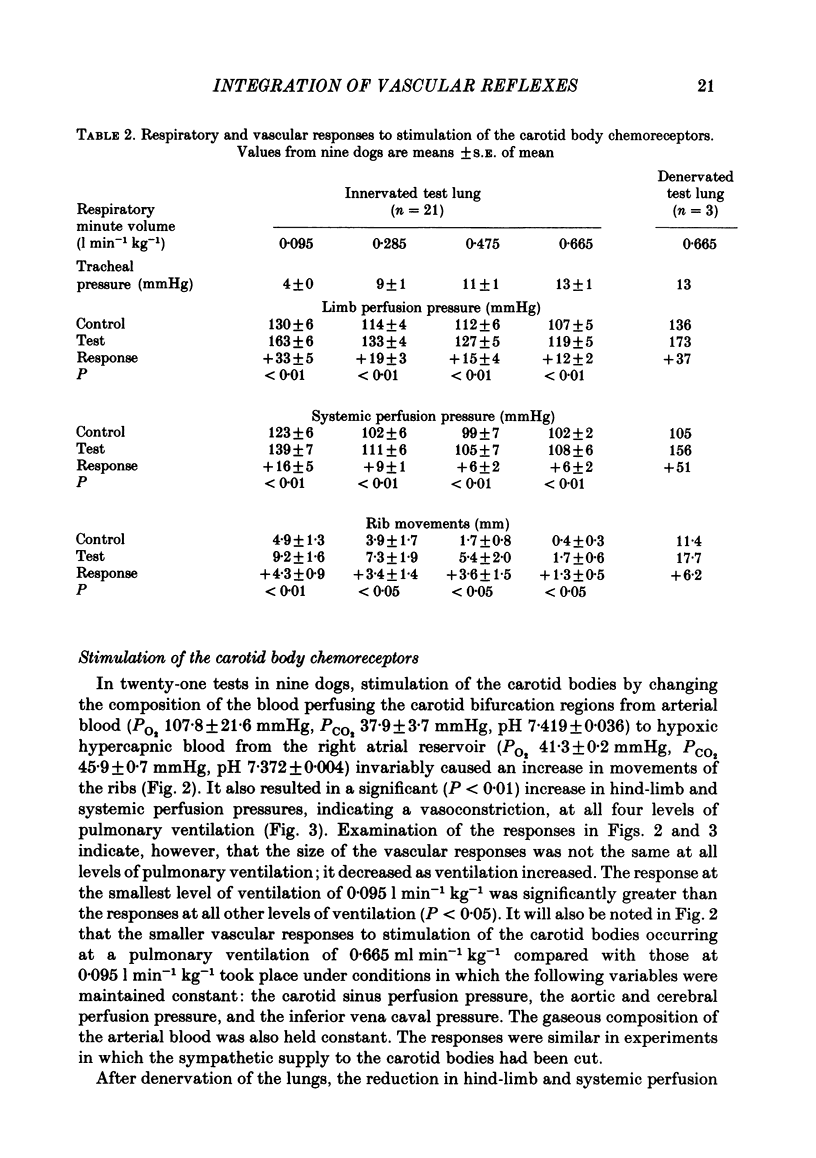
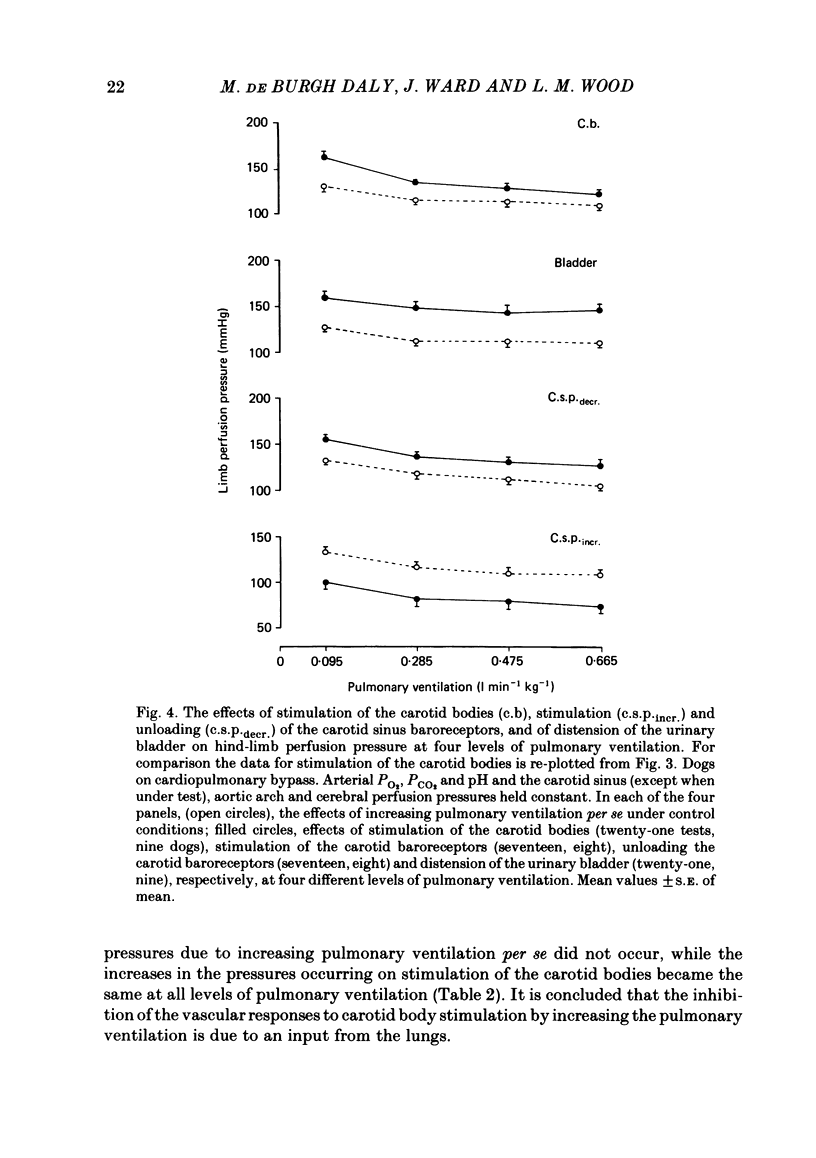
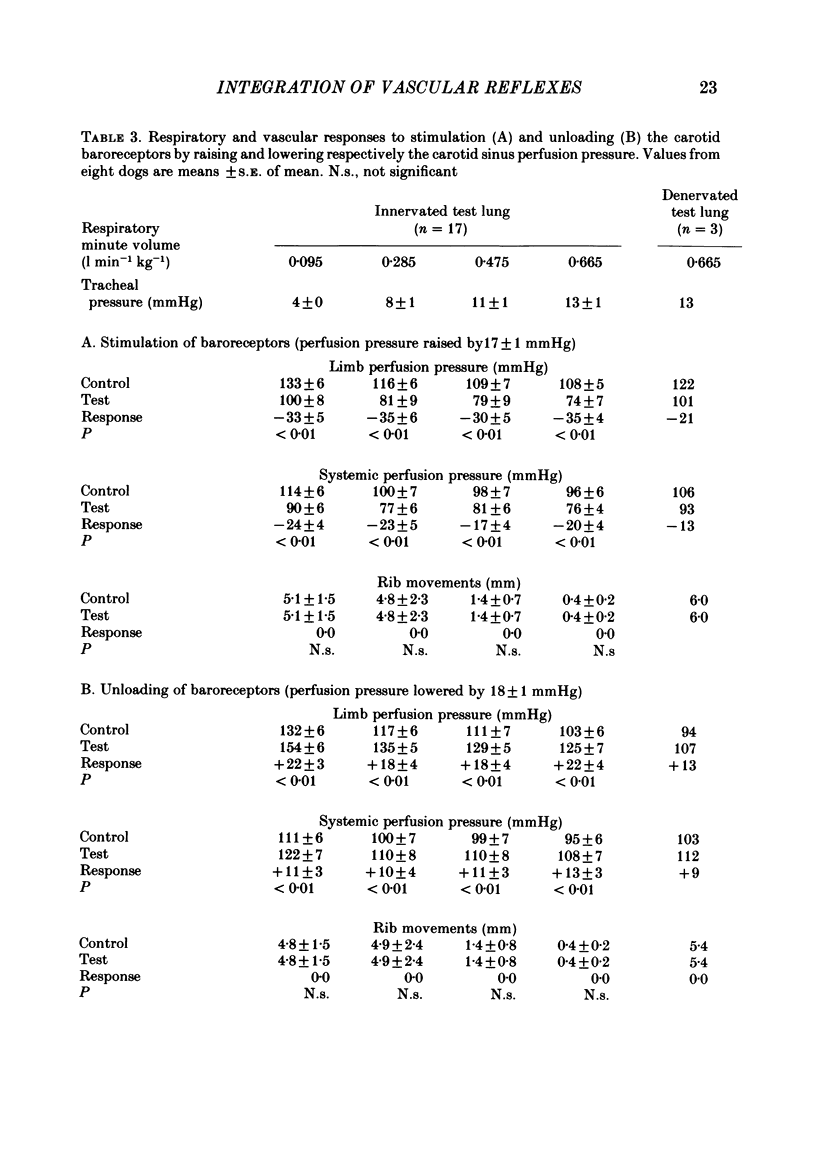
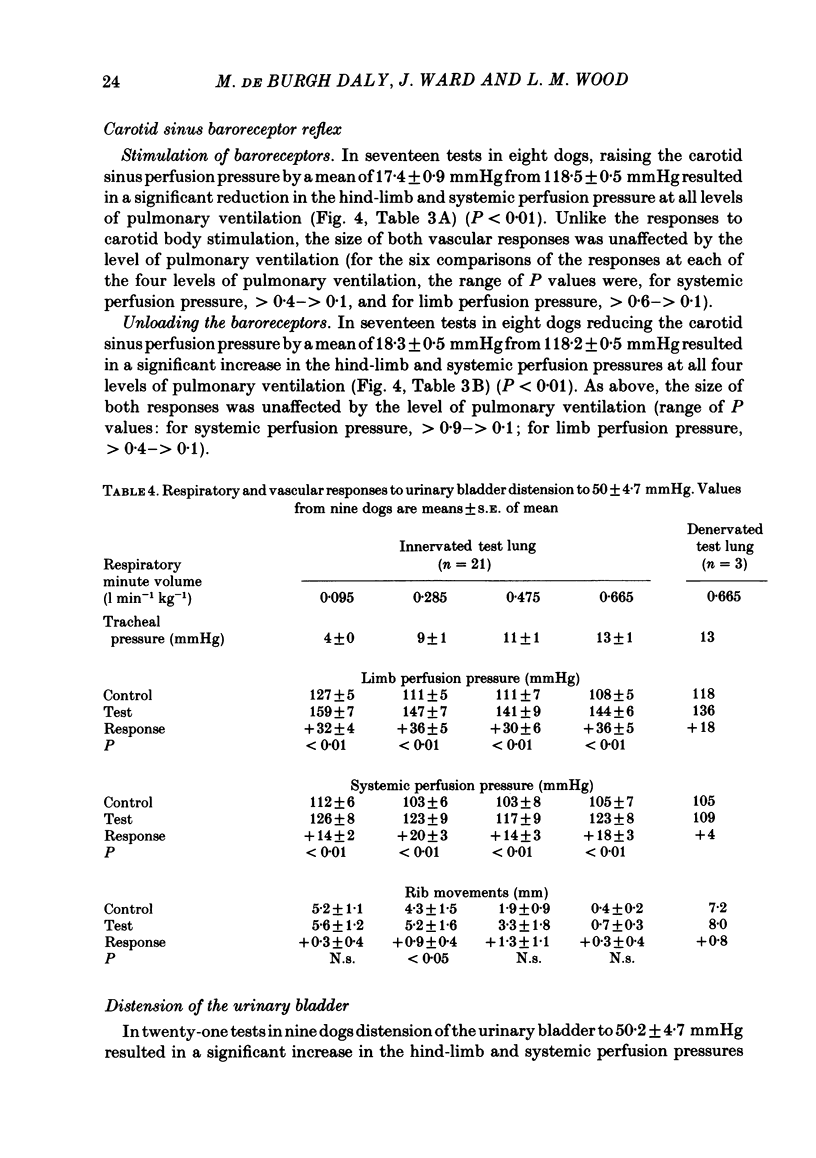
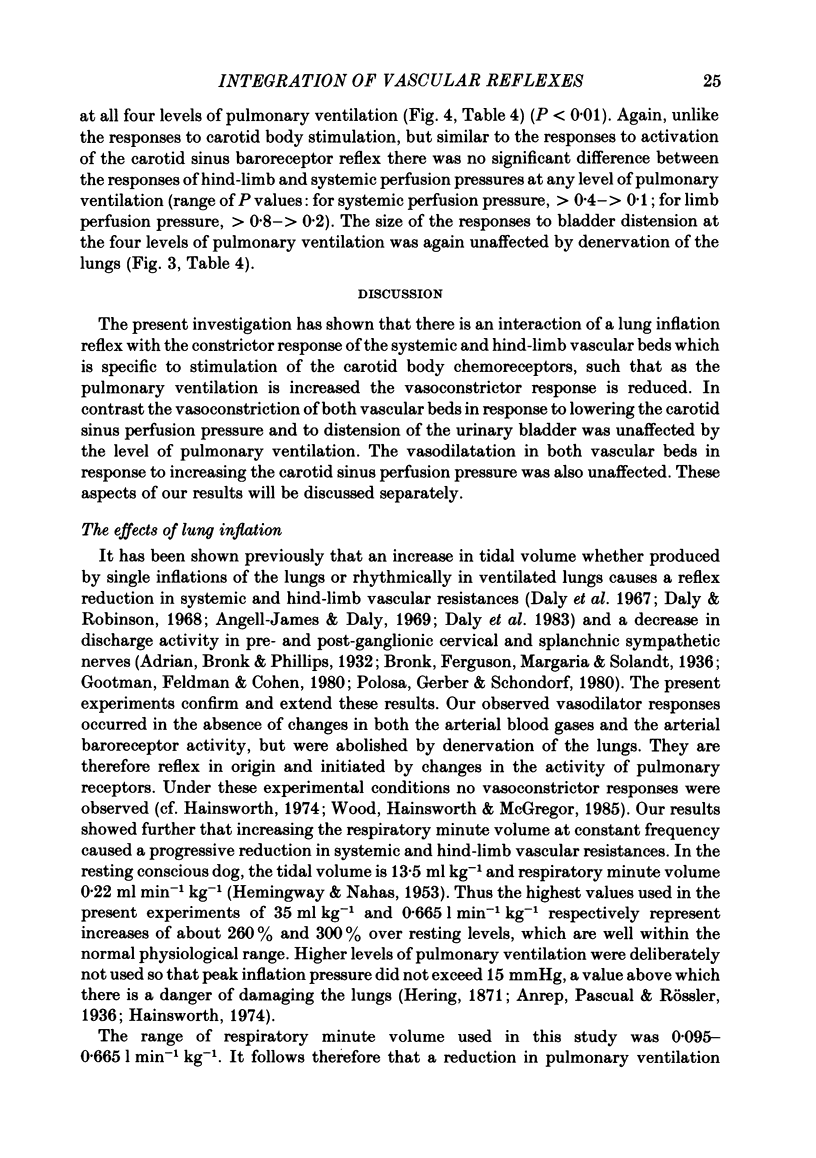

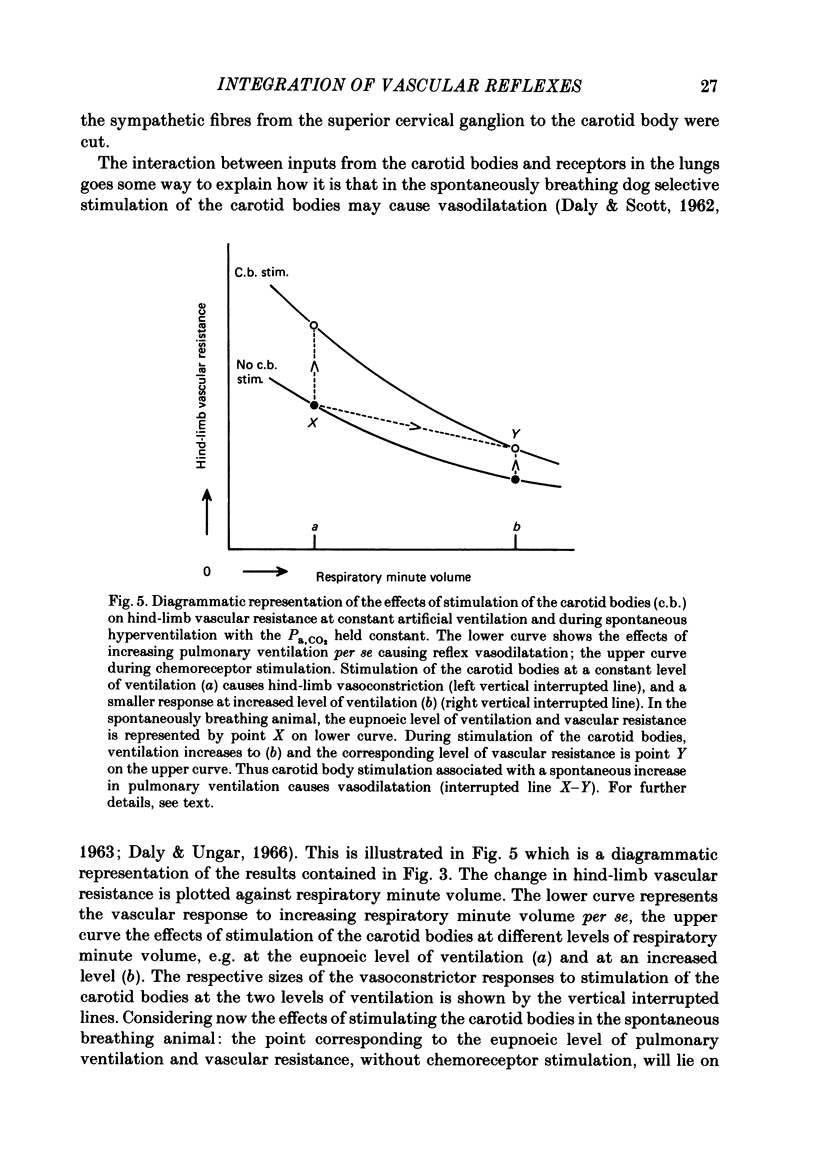
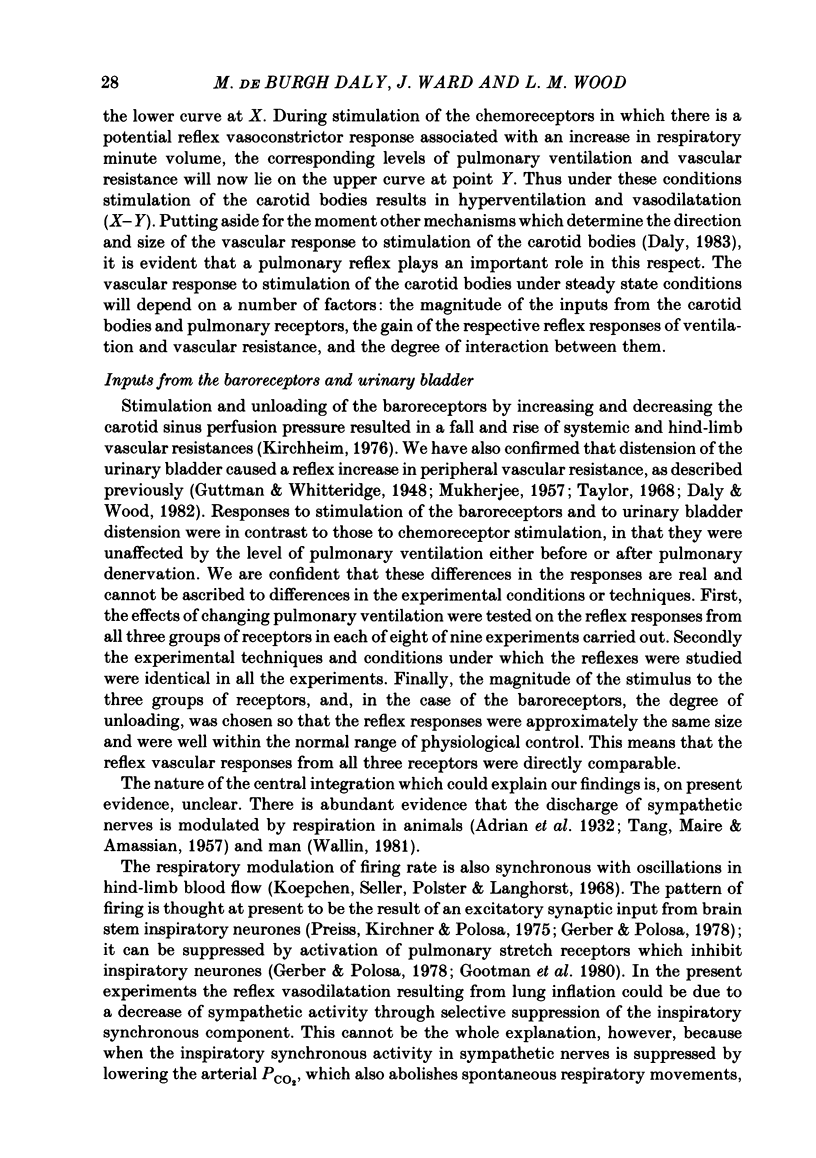
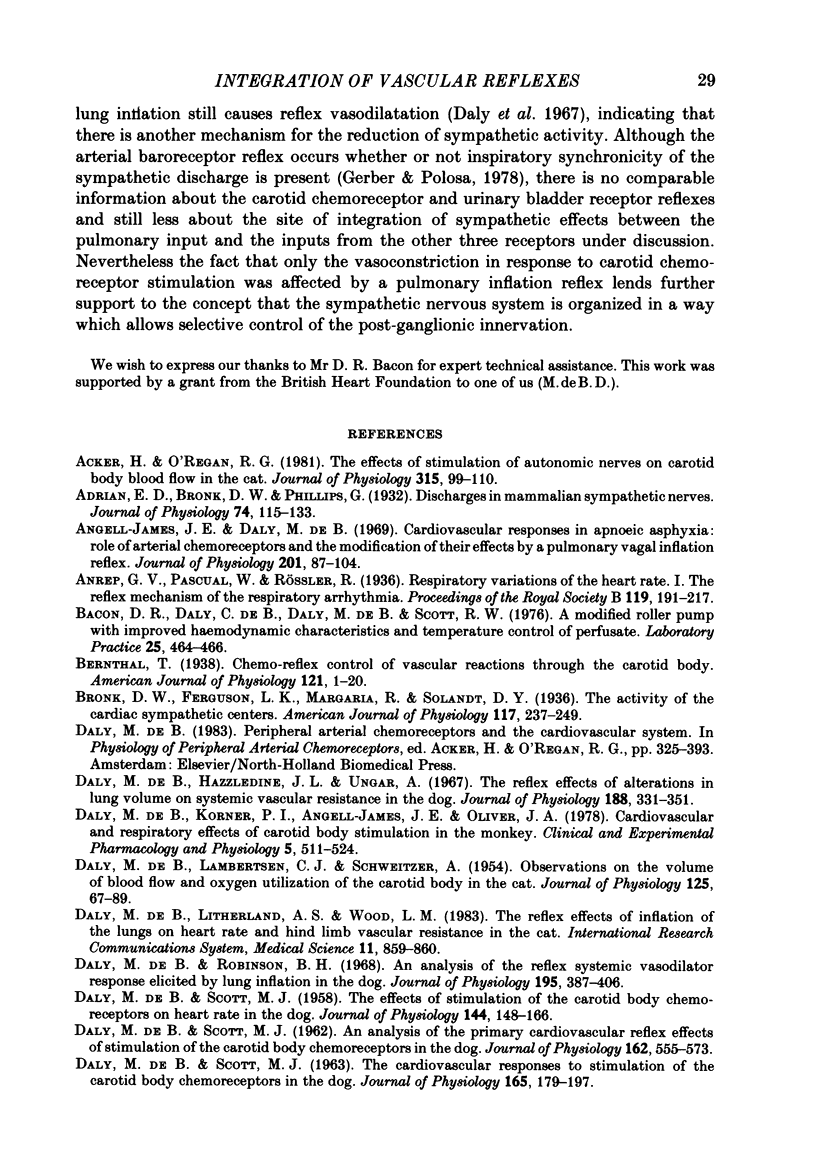
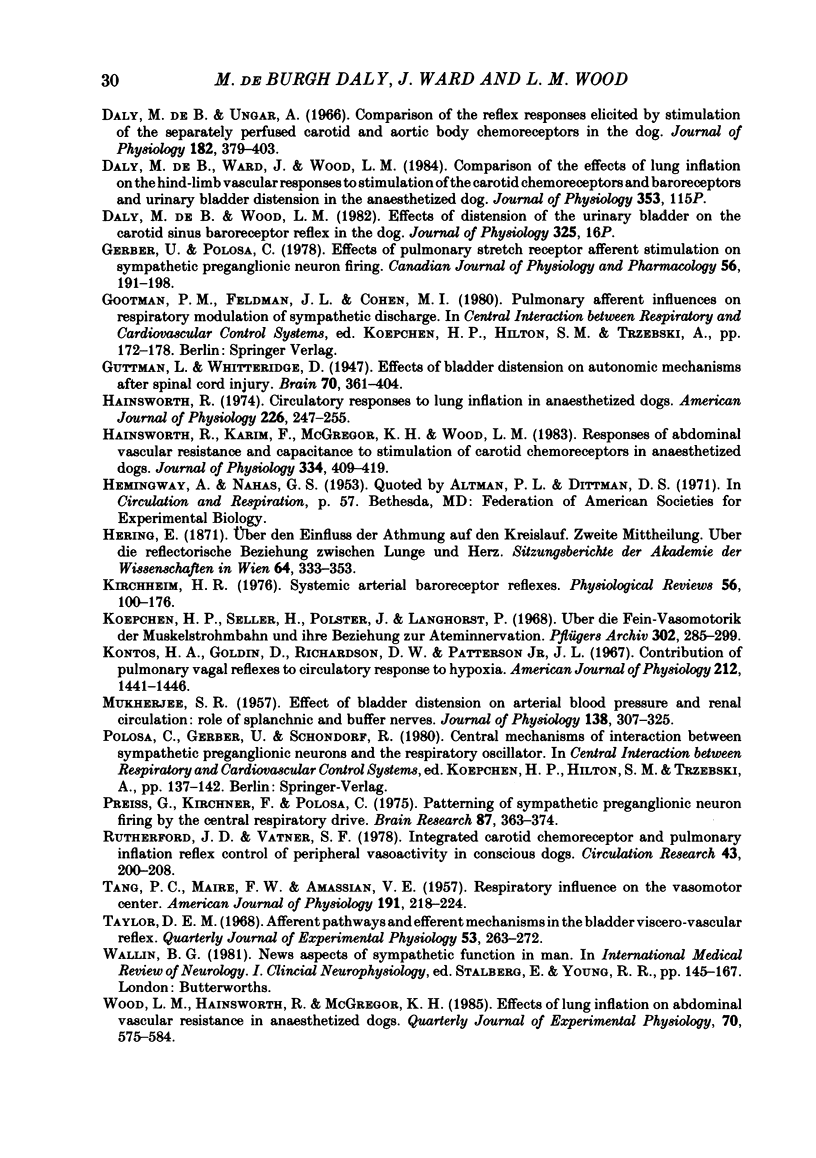
Selected References
These references are in PubMed. This may not be the complete list of references from this article.
- Acker H., O'Regan R. G. The effects of stimulation of autonomic nerves on carotid body blood flow in the cat. J Physiol. 1981 Jun;315:99–110. doi: 10.1113/jphysiol.1981.sp013735. [DOI] [PMC free article] [PubMed] [Google Scholar]
- Adrian E. D., Bronk D. W., Phillips G. Discharges in mammalian sympathetic nerves. J Physiol. 1932 Feb 8;74(2):115–133. doi: 10.1113/jphysiol.1932.sp002832. [DOI] [PMC free article] [PubMed] [Google Scholar]
- Bacon D. R., Daly C DE B., Daly M. de B., Scott R. W. Midified roller pump with improved haemodynamic characteristics and temperature control of perfusate. Lab Pract. 1976 Jul;25(7):464–466. [PubMed] [Google Scholar]
- DALY M. D., SCOTT M. J. The cardiovascular responses to stimulation of the carotid body chemoreceptors in the dog. J Physiol. 1963 Jan;165:179–197. doi: 10.1113/jphysiol.1963.sp007051. [DOI] [PMC free article] [PubMed] [Google Scholar]
- DE BURGH DALY M., LAMBERTSEN C. J., SCHWEITZER A. Observations on the volume of blood flow and oxygen utilization of the carotid body in the cat. J Physiol. 1954 Jul 28;125(1):67–89. doi: 10.1113/jphysiol.1954.sp005143. [DOI] [PMC free article] [PubMed] [Google Scholar]
- DE BURGH DALY M., SCOTT M. J. An analysis of the primary cardiovascular reflex effects of stimulation of the carotid body chemoreceptors in the dog. J Physiol. 1962 Aug;162:555–573. doi: 10.1113/jphysiol.1962.sp006950. [DOI] [PMC free article] [PubMed] [Google Scholar]
- DE DALY M. B., SCOTT M. J. The effects of stimulation of the carotid body chemoreceptors on heart rate in the dog. J Physiol. 1958 Nov 10;144(1):148–166. doi: 10.1113/jphysiol.1958.sp006092. [DOI] [PMC free article] [PubMed] [Google Scholar]
- Daly M. D., Robinson B. H. An analysis of the reflex systemic vasodilator response elicited by lung inflation in the dog. J Physiol. 1968 Mar;195(2):387–406. doi: 10.1113/jphysiol.1968.sp008464. [DOI] [PMC free article] [PubMed] [Google Scholar]
- Daly M., Ungar A. Comparison of the reflex responses elicited by stimulation of the separately perfused carotid and aortic body chemoreceptors in the dog. J Physiol. 1966 Jan;182(2):379–403. doi: 10.1113/jphysiol.1966.sp007828. [DOI] [PMC free article] [PubMed] [Google Scholar]
- De Burgh Daly M., Hazzledine J. L., Ungar A. The reflex effects of alterations in lung volume on systemic vascular resistance in the dog. J Physiol. 1967 Feb;188(3):331–351. doi: 10.1113/jphysiol.1967.sp008142. [DOI] [PMC free article] [PubMed] [Google Scholar]
- Gerber U., Polosa C. Effects of pulmonary stretch receptor afferent stimulation on sympathetic preganglionic neuron firing. Can J Physiol Pharmacol. 1978 Apr;56(2):191–198. doi: 10.1139/y78-027. [DOI] [PubMed] [Google Scholar]
- Hainsworth R. Circulatory responses from lung inflation in anesthetized dogs. Am J Physiol. 1974 Feb;226(2):247–255. doi: 10.1152/ajplegacy.1974.226.2.247. [DOI] [PubMed] [Google Scholar]
- Hainsworth R., Karim F., McGregor K. H., Wood L. M. Responses of abdominal vascular resistance and capacitance to stimulation of carotid chemoreceptors in anaesthetized dogs. J Physiol. 1983 Jan;334:409–419. doi: 10.1113/jphysiol.1983.sp014502. [DOI] [PMC free article] [PubMed] [Google Scholar]
- James J. E., Daly M. de B. Cardiovascular responses in apnoeic asphyxia: role of arterial chemoreceptors and the modification of their effects by a pulmonary vagal inflation reflex. J Physiol. 1969 Mar;201(1):87–104. doi: 10.1113/jphysiol.1969.sp008744. [DOI] [PMC free article] [PubMed] [Google Scholar]
- Kirchheim H. R. Systemic arterial baroreceptor reflexes. Physiol Rev. 1976 Jan;56(1):100–177. doi: 10.1152/physrev.1976.56.1.100. [DOI] [PubMed] [Google Scholar]
- Koepchen H. P., Seller H., Polster J., Langhorst P. Uber die Fein-Vasomotorik der Muskelstrombahn und ihre Beziehung zur Ateminnervation. Pflugers Arch. 1968;302(4):285–299. doi: 10.1007/BF00592729. [DOI] [PubMed] [Google Scholar]
- Kontos H. A., Goldin D., Richardson D. W., Patterson J. L., Jr Contribution of pulmonary vagal reflexes to circulatory response to hypoxia. Am J Physiol. 1967 Jun;212(6):1441–1446. doi: 10.1152/ajplegacy.1967.212.6.1441. [DOI] [PubMed] [Google Scholar]
- MUKHERJEE S. R. Effect of bladder distension on arterial blood pressure and renal circulation: role of splanchnic and buffer nerves. J Physiol. 1957 Sep 30;138(2):307–325. doi: 10.1113/jphysiol.1957.sp005853. [DOI] [PMC free article] [PubMed] [Google Scholar]
- Preiss G., Kirchner F., Polosa C. Patterning of sympathetic preganglionic neuron firing by the central respiratory drive. Brain Res. 1975 Apr 11;87(2-3):363–374. doi: 10.1016/0006-8993(75)90434-5. [DOI] [PubMed] [Google Scholar]
- Rutherford J. D., Vatner S. F. Integrated carotid chemoreceptor and pulmonary inflation reflex control of peripheral vasoactivity in conscious dogs. Circ Res. 1978 Aug;43(2):200–208. doi: 10.1161/01.res.43.2.200. [DOI] [PubMed] [Google Scholar]
- TANG P. C., MAIRE F. W., AMASSIAN V. E. Respiratory influence on the vasomotor center. Am J Physiol. 1957 Nov;191(2):218–224. doi: 10.1152/ajplegacy.1957.191.2.218. [DOI] [PubMed] [Google Scholar]
- Taylor D. E. Afferent pathways and efferent mechanisms in the bladder viscero-vascular reflex. Q J Exp Physiol Cogn Med Sci. 1968 Jul;53(3):262–272. doi: 10.1113/expphysiol.1968.sp001969. [DOI] [PubMed] [Google Scholar]
- Wood L. M., Hainsworth R., McGregor K. H. Effects of lung inflation on abdominal vascular resistance in anaesthetized dogs. Q J Exp Physiol. 1985 Oct;70(4):575–584. doi: 10.1113/expphysiol.1985.sp002944. [DOI] [PubMed] [Google Scholar]
- de Burgh Daly M., Korner P. I., Angell-James J. E., Oliver J. A. Cardiovascular and respiratory effects of carotid body stimulation in the monkey. Clin Exp Pharmacol Physiol. 1978 Sep-Oct;5(5):511–524. doi: 10.1111/j.1440-1681.1978.tb00704.x. [DOI] [PubMed] [Google Scholar]


